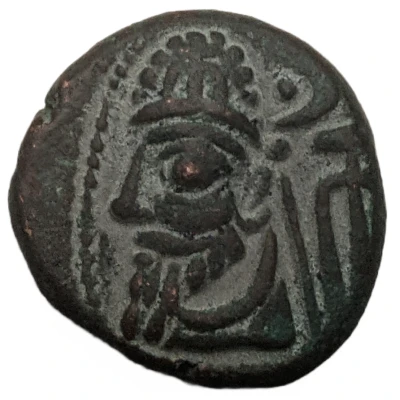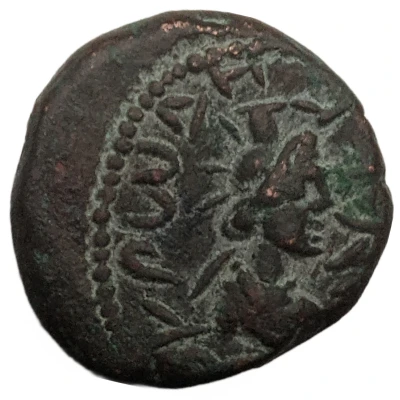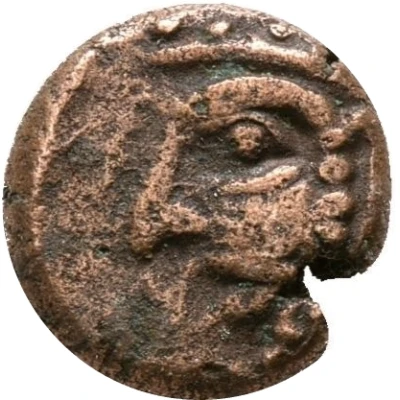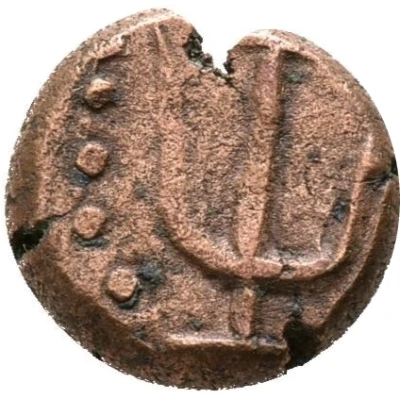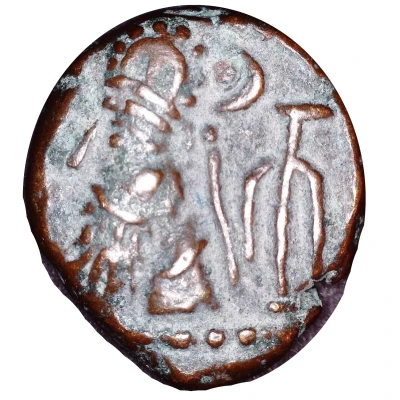
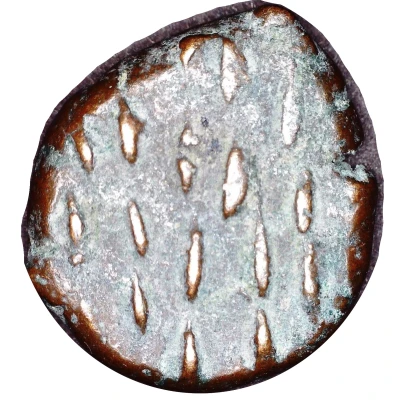

© David E. Anderson
Drachm - Orodes II Kingdom of Elymais Arsacid Dynasty
100 (50-100) years| Billon (CuSn or CuZn) | 3.97 g | 16 mm |
| Issuer | Elymais (Parthian Empire (247 BC - 224 AD)) |
|---|---|
| Type | Standard circulation coin |
| Year | 100 (50-100) |
| Value | Drachm (1) |
| Currency | Drachm (247 BC-224 AD) |
| Composition | Billon (CuSn or CuZn) |
| Weight | 3.97 g |
| Diameter | 16 mm |
| Thickness | 3 mm |
| Shape | Round (irregular, 16.1 x 14.1 millimeters) |
| Technique | Hammered |
| Orientation | Variable alignment ↺ |
| Demonetized | Yes |
| Updated | 2024-10-10 |
| Numista | N#239354 |
|---|---|
| Rarity index | 90% |
Reverse
Parallel dashes and perhaps another anchor (only U seen on this coin).
Comment
Elymais or Elamais (Ἐλυμαΐς, Hellenic form of the more ancient name, Elam) was an autonomous state of the 2nd century BC to the early 3rd century AD, frequently a vassal under Parthian control, and located at the head of the Persian Gulf in the present-day region of Khuzestan, Iran (Susiana). The Elymaeans were skilled archers and natives of Susa, which lay to the east of the territory of Elymais. Most of the people of the kingdom were probably descendants of the ancient Elamites, who once had control of that area in the past. The provinces of Elymais were Massabatice (later Masabadhan), Corbiane and Gabiane. Source: WikipediaThe Elymaeans appropriated the anchor motif in the latter part of the second century BC. It initially may have been intended as a symbol of the mint at Seleucia on the Hedyphon. In the early history of Elymais (which had supplanted Seleucid control of a small area at the north end of the Persian Gulf), the anchor's shape closely echoed the Seleucid version. Its shape changed some over the next several centuries on Elymaean coins as it became a general symbol of Elymais. It is believed that the number of crossbars on the anchors on coins from Elymais may be an indicator of mint location. Source: BobL on CoinCommunity.com, posted 4/27/2020.
Interesting fact
One interesting fact about this coin is that it was issued during the reign of Orodes II, who was a king of the Kingdom of Elymais, a vassal state of the Parthian Empire. The Parthian Empire was a major power in the ancient Near East, known for its extensive trade networks, cultural achievements, and military prowess. The fact that this coin was made of billon, a copper-tin or copper-zinc alloy, suggests that it was intended for everyday use and circulation, rather than being a high-value or ceremonial coin. Additionally, the fact that it weighs 3.97 grams suggests that it was a relatively small coin, making it easy to handle and transport. Overall, this coin provides a fascinating glimpse into the economic and cultural practices of the ancient Parthian Empire and its vassal states.
